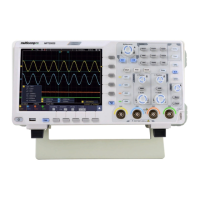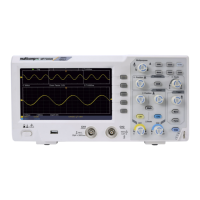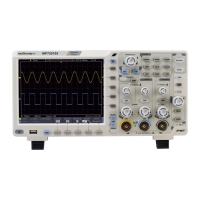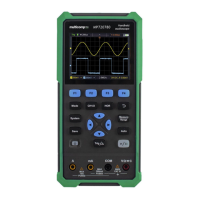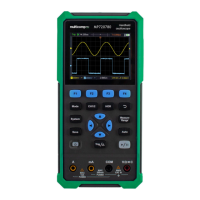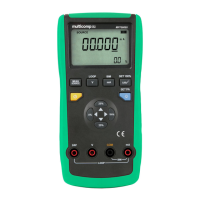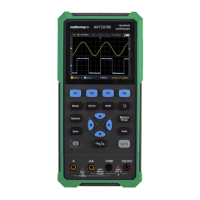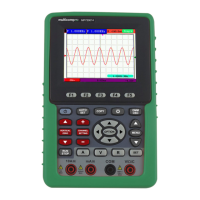User Manual
control to adjust the vertical position of M waveform.
7. Press the F5 menu selection button and choose VOLTS/DIV, turn the M rotary
control to adjust the voltage division of M waveform.
Figure 5-8 Waveform resulted from CH1 +CH2
Using FFT function
The FFT (fast Fourier transform) math function mathematically converts a time-domain
waveform into its frequency components. It is very useful for analyzing the input signal on
Oscilloscope. You can match these frequencies with known system frequencies, such as
system clocks, oscillators, or power supplies.
FFT function in this oscilloscope transforms 2048 data points of the time-domain signal
into its frequency components mathematically and the final frequency contains 1024
points ranging from 0Hz to Nyquist frequency.
Taking the FFT operation for example, the operation steps are as follows:
1. Press the Math button and call out the Math menu.
2. Press the H2 button and call out the FFT menu.
3. Press the F1 button to choose CH1 as the source.
4. Press F2 button, the windows item will display at the left of the screen, turn the M
rotary control to select Window, including Rectangle, Hamming, Hanning and
Blackman.
5. Press F3 button to choose the Format, including dB, Vrms.
6. Press F4 button, the zoom window will display at the left of the screen, turn the M
rotary control to zoom in or out the wave of the multiple including ×1, ×2, ×5, ×10.
To select the FFT window
■ There are four FFT windows. Each one has trade-offs between frequency resolution and
